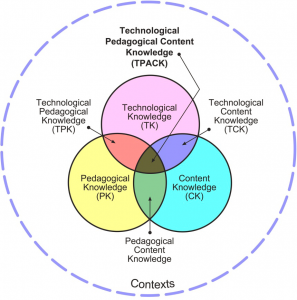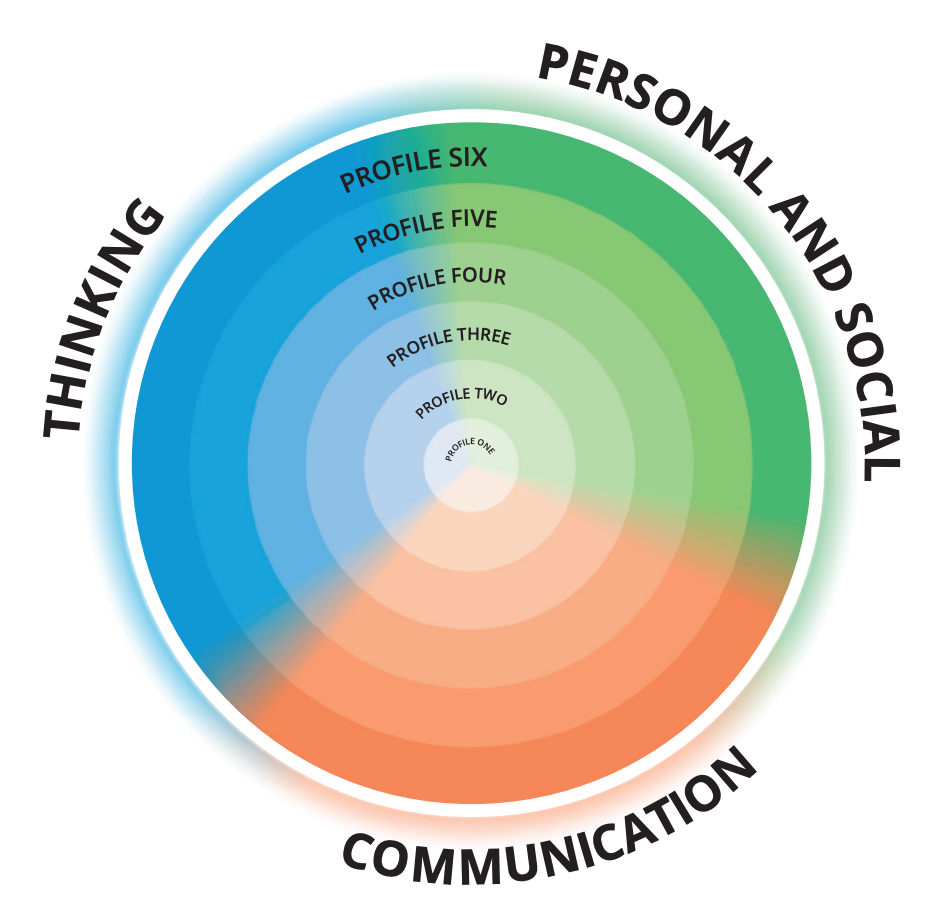My context is that I am currently a grade two teacher, the Vice Principal, and the technology support teacher at my school. The school district that I am a part of strongly supports technology use in the classroom and are often pushing out different types of opportunities. With the school and PAC funds that we have access to, our school is equipped with iPads and Chromebooks and students in Grades 4-7 are strongly encouraged to invest in a personal device. We also have dropdown projectors in all classrooms and a SmartBoard in our school library. I would say, for the most part, that the technology devices and applications that we use within our school have either been suggested by the district or apps that are gaining public popularity. As I applied for this Master’s program, I was hoping that it would help me to tighten up our systems, develop a vision for our school, and a structure to more thoughtfully reflect on what and how to implement ‘new’ technology into our practice.
Through these readings, I am leading more towards the TPACK model. There seems to be more research behind the implementation and use of the model to develop and create deep learning experiences for classroom teacher and students. As an administrator, it would push me to be extremely thoughtful and intentional with what I brought to staff. I would have to think about the content knowledge, technologic knowledge, and pedagogical knowledge of all staff.

“The basis of effective teaching with technology, requiring an understanding of the representation of concepts using technologies; pedagogical techniques that use technologies in constructive ways to teach content; knowledge of what makes concepts difficult or easy to learn and how technology and help redress some of the problems that students face; knowledge of students prior knowledge and theories of epistemology; and knowledge of how technologies can be used to build on existing knowledge to develop new epistemologies or strengthen old ones” (Koehler & Mishra, 2009).
Teaching is a complicated and confusing profession and with the addition of technology, it often just becomes an add on. In the past, I have found that our school brings in technology that is new and exciting but it often sits unused because teachers don’t have an understanding of how to use it, how it will assist in developing their pedagogical understanding, and how it will help enhance content knowledge – a perfect example of that is our SmartBoard. Something that could change the way that technology is perceived and understood would be to go through the different types of knowledge need to be developed before the full introduction of a new technology or application. Providing the research, having conversations with staff about our collective understanding and vision in regards to technology, providing sessions for educators to play around an explore with the technology, and building content capacity before introducing a technology to support.
However, I think the SAMR model also has a place in the school. I think it serves as a great reminder to implement a variety of technology in the classroom. We shouldn’t be spending all of our time at the bottom with substitution and augmentation and challenge ourselves to modify and redefine the learning in classroom with technology. The reference of the SAMR model with staff, could provoke thought provoking question and reminders about what we are doing in our classroom – such as why are we using what we are using in the first place? Is it the best thing to do? Is it going to have an impact on the learning? It provides a starting point to have conversations about technology. Based on the articles given for this week’s readings, there doesn’t seem to be much research about the process of implementing the structure and many questions surrounding the efficacy of the SAMR model. In the education community, there seems to be concerns around the contextual implementation of the model, rigid structure where activities are only supposed to fall within one of the four levels, and the primary focus on product instead of process of learning (Hamilton & Rosenberg et al., 2016). Therefore, I would start by moving through the TPACK model when implementing or introducing new technology, and use the SAMR model to facilitate discussion around what we are already doing and what we can move towards.
Resources:
Hamilton, E.R., Rosenberg, J.M. & Akcaoglu, M. (2016). The Substitution Augmentation Modification Redefinition (SAMR) Model: a Critical Review and Suggestions for its Use. TechTrends 60(5), 433-441. https://doi.org/10.1007/s11528-016-0091-y
Koehler, M. & Mishra, P. (2009). What is Technological Pedagogical Content Knowledge (TPACK)?. Contemporary Issues in Technology and Teacher Education, 9(1), 60-70. Waynesville, NC USA: Society for Information Technology & Teacher Education. https://www.learntechlib.org/primary/p/29544/.




Recent Comments